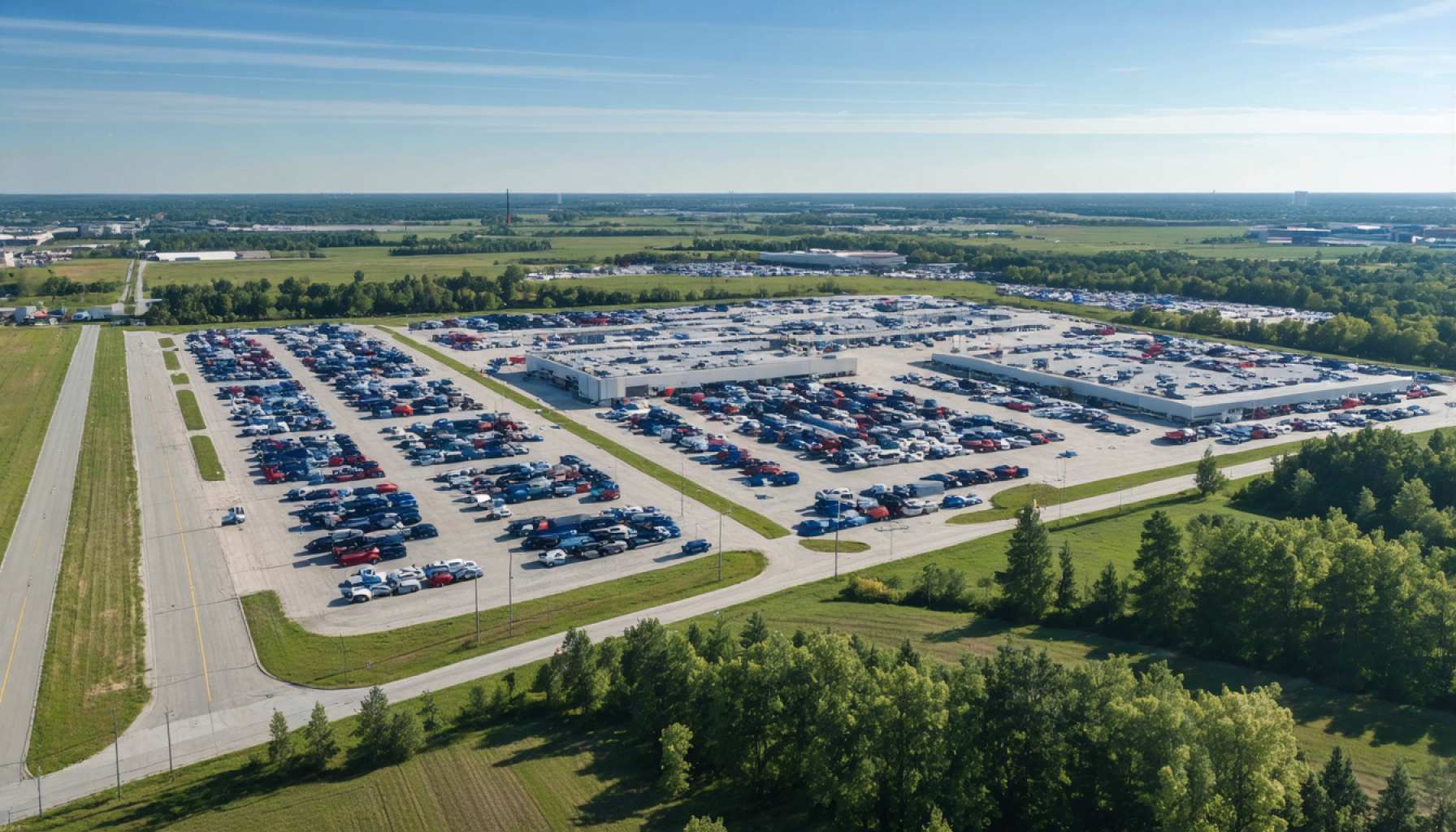- A 380,000-square-foot automotive parts plant by Minth Group is rising in Windsor, Ontario, focusing on electric vehicle components.
- This $300 million facility will produce cases for EV batteries, aiming to be operational by September, boosting local supply chains.
- The project is set to invigorate Windsor’s economy by creating “good-paying” jobs and highlighting the city’s role in technological advancement.
- Supported by a $40 million loan from the Ontario government, the plant underscores the region as a hub for innovation amidst global economic challenges.
- Strategically located on the Canadian-American border, Windsor leverages its dynamic workforce and trade agreements to play a pivotal role in the automotive industry.
- The development represents a commitment to sustainability, positioning Windsor at the forefront of next-generation vehicle technology.
In the heart of Windsor, Ontario, something monumental is taking shape. The hum of machinery and the clatter of construction herald the rise of a sprawling 380,000-square-foot automotive parts manufacturing plant, set upon surplus airport land on Cabana Road East. This ambitious endeavor marks the first phase of an expansive multi-building manufacturing campus envisioned by Minth Group, a leader in providing essential components for electric and hybrid vehicles.
This state-of-the-art facility is not just a mere addition to Minth Group’s global footprint; it’s a $300 million strategic investment aimed at satiating the burgeoning demand for advanced automotive components. Specializing in the production of cases for electric vehicle batteries, the plant is projected to be operational by September, bolstering the supply chain for aluminum, steel, and plastic components crucial for constructing battery trays, vehicle structures, and exterior trims.
The plant’s development is poised to be a boon for the local economy, invigorating it with “good-paying” jobs and igniting renewed interest in Windsor as a beacon of technological advancement and manufacturing prowess. The Ontario government has underscored its support with a formidable $40 million loan, underscoring a commitment to cement the region’s status as a hub for innovation, despite swirling global economic uncertainties and international trade tensions.
Ontario’s Minister of Economic Development, Vic Fedeli, emphasizes that this project transcends economic challenges, showcasing Ontario’s resilience and its compelling allure for global investors and manufacturers. Positioned strategically on the Canadian-American border, Windsor emerges as a pivotal player in the North American automotive landscape, fueled by a dynamic workforce and bolstered by advantageous trade agreements.
Windsor Mayor Drew Dilkens conveys his vision of a revitalized city, noting that this development not only propels the local economy into a new era but also stakes Windsor’s claim as a vanguard in next-generation vehicle technology. The anticipation is palpable; each concrete pour and steel beam sets the stage for a transformative future.
As communities and industries worldwide grapple with the imperative of sustainability, Windsor’s new plant symbolizes a forward-thinking leap. It represents not just the physical manifestation of infrastructure but a commitment to a more sustainable, cleaner, and innovative automotive future. This project stands as a testament to the power of visionary investments in paving the road towards a greener tomorrow, where economic vitality and environmental stewardship march hand in hand.
Breaking Ground in Windsor: How a New Manufacturing Plant is Set to Revolutionize the Automotive Industry
Ambitious Project Overview
The Minth Group’s new automotive parts manufacturing plant is a significant development, not just for Windsor, Ontario, but for the global automotive industry. Positioned on surplus airport land on Cabana Road East, this state-of-the-art facility spans 380,000 square feet and represents a $300 million investment. The plant will specialize in producing cases for electric vehicle (EV) batteries, aiming to be fully operational by September.
Economic Impact and Job Creation
One of the most substantial benefits of the new plant is its potential impact on the local economy. The facility is expected to create numerous jobs, providing well-paying opportunities in a region poised for technological and manufacturing growth. This aligns well with Ontario’s strategic goals to enhance its position as a manufacturing and innovation hub.
The province’s support, encapsulated in a $40 million loan, highlights the project’s significance and its potential to invigorate the regional economy amidst global uncertainties. Vic Fedeli, Ontario’s Minister of Economic Development, underscores how this plant showcases the province’s resilience and appeal for global investors.
Technological Advancements and Production Focus
The plant focuses on manufacturing advanced components essential for electric and hybrid vehicles. Specializing in aluminum, steel, and plastic components used in battery trays, vehicle structures, and exterior trims, the facility supports the burgeoning demand for eco-friendly automotive solutions.
Real-World Use Cases
– Supply Chain Optimization: By localizing the production of crucial EV components, Minth Group enhances the efficiency and reliability of the supply chain for North American automakers.
– Sustainability Goals: The plant stands as a beacon of Windsor’s commitment to sustainable and innovative vehicle technology.
Future Trends and Predictions
As the automotive industry pivots towards electrification, facilities like the Minth Group’s Windsor plant are critical. The demand for EVs is projected to grow exponentially, providing sustained opportunities for component manufacturers. Moreover, Windsor’s strategic location at the Canadian-American border could leverage advantageous trade deals, making it a cornerstone in North America’s automotive supply chain.
Limitations and Considerations
While the plant’s development is a positive step, it’s crucial to address potential challenges:
– Economic Fluctuations: Global trade tensions and economic uncertainties might impact future growth.
– Technological Integration: Ensuring the facility stays at the cutting edge of manufacturing technology will require ongoing investment.
Quick Tips for Local Businesses
1. Leverage Opportunities: Local businesses should prepare to support the plant’s operations, from logistics and transportation to supply services.
2. Skill Development: Invest in workforce training programs to align with the technological demands of modern manufacturing.
For more insights on similar transformative investments, visit the official Ontario website.
By investing in projects like the Minth Group’s plant, regions like Windsor can embody the future of automotive manufacturing, capitalizing on sustainable practices and technological advancements to forge a path towards economic vitality and environmental stewardship.













